Magnetic Resonance Imaging (MRI Scan)
- Definition
- Preparation
- The Procedure
- Obtaining the Results
- Contraindications
- Directions
- Contacts
- Making an appointment
1. Definition:
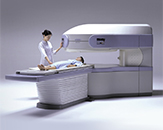 Magnetic Resonance Imaging uses a strong magnetic field, radio waves and a computer to
produce detailed internal pictures of your body. No X-Rays are involved.
Magnetic Resonance Imaging uses a strong magnetic field, radio waves and a computer to
produce detailed internal pictures of your body. No X-Rays are involved.
Any part of your body can be imaged to assist in the diagnosis of your medical condition.
2. Preparation:
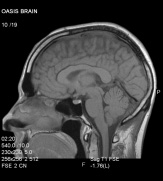 For the majority of examinations no preparation is required. You may continue to eat
and drink and take your medication as usual.
For the majority of examinations no preparation is required. You may continue to eat
and drink and take your medication as usual.
If any preparation is required a member of staff will contact you with instructions.
For your own safety and convenience, we ask that you change into a hospital gown.
3. The Procedure:
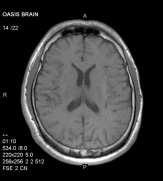 Check in:
Check in:
You will be seated in the waiting room where you will be given a MRI Safety
Questionnaire to complete. This is to ensure that you are safe to go into the
scanning room. A Radiographer will go through this with you before you are
taken into the scanning room.
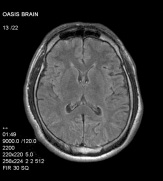 The Scan Itself:
The Scan Itself:
For the majority of scans you will be required to lie on your back on a padded
table, which moves into the magnet opening. An explanation will be given to you
with an approximate time for the length of the scan. You will be given an alarm
button to hold. In an emergency you may press this button to alert the
Radiographer. The scan will be stopped and you will be removed from the scanner
immediately.
You will be able to talk to the Radiographer when you are in the scanner via an intercom system. The Radiographer will talk to you via this intercom.
It is extremely important that you keep still while you are being scanned. Any movement will blur the images and the scans may need to be repeated.
Once the scans are complete you will be moved away from the machine and you will be free to collect your belongings and leave the clinic.
NOTE: Some procedures will require a small injection of contrast into a vein in your arm (similar to a blood test). This technique provides more detailed information on the images. You will be informed of this before the scan is started.
4. Obtaining the Results:
Your MRI Scan will be interpreted by a Consultant Radiologist who specialises in MR Imaging. This is usually done on the day of your scan. The report and the images are sent to your referring clinician the following day. You will be contacted by your referring clinician in due course to discuss the findings of this procedure.
5. Contraindications:
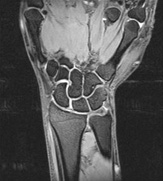 There are several medical
conditions or metallic devices that may be in the body that make MRI scanning
unsuitable, for example:
There are several medical
conditions or metallic devices that may be in the body that make MRI scanning
unsuitable, for example:
- A Cardiac Pacemaker
- Aneurysm Clips
- Metallic foreign bodies (particularly in the eyes)
- Cochlear Implants
- Neurostimulators
- Pregnancy
All of the above make the use of powerful magnetism impractical and unwise. However, stainless steel prostheses such as hip or knee joint replacements, spinal and intramedullary nails and some heart valves can be imaged safely. If you have any of these devices or conditions please discuss with a member of staff whether it is possible for you to undergo the examination.
6. Directions:
Link to map.
7. Contacts:
Rad-One
Puerto Deportivo Sotogrande
Local 3 - Edificio C
11310 Sotogrande ( Cádiz )
España
Phone:
0034 600 44 33 00
8. Making an appointment:
In order to have any Imaging procedure you must have a request form. This can be a GP or Consultant Specialist. This is a legal requirement.
 Come and visit us
Come and visit us